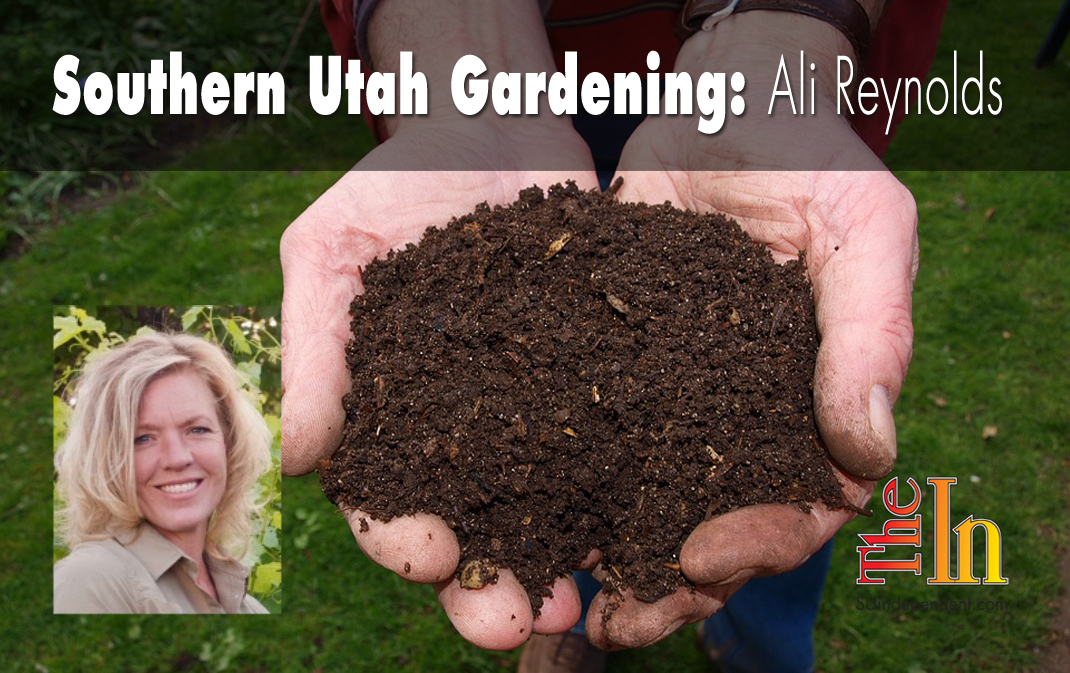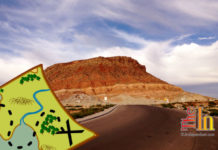 Southern Utah Gardening: Backyard composting
Southern Utah Gardening: Backyard composting
There’s more to backyard composting than leaves, grass clippings, and kitchen scraps. In one handful of brown compost matter exists an ecosystem of fungi, bacteria, enzymes, sugars, and nutrients galore! While millipedes, earthworms, and sow bugs make their way through the organic concoction, it’s the unseen army of microscopic creatures that does most of the work of breaking down the rough stuff into compost. It’s that finished black gold and its wonderful benefits to our garden that we clearly see.
If there is one thing you can do this year to improve your garden, it’s starting a compost pile. The benefits are innumerable, from improved tilth to a revitalized soil ecosystem. Backyard composting turns organic waste into the best soil conditioner around.
There are two methods of creating compost: hot and cold. A cold composting system is one in which organic waste is simply dumped in a pile to decompose. The gardener expends little energy in managing the pile and just simply waits for it to decompose. Hot composting requires a system that raises temperatures high enough and for a long enough time to destroy weed seeds and plant pathogens. This requires some work on the part of the gardener with layering of organic materials and maintaining heap temperatures.
The term “cold composting” is a bit misleading as its temperature will rise. It’s more passive. A cold pile may be as sophisticated as a three-bin system or as simple as a heap of leaves. The beauty of cold composting is that you just pick a spot to plop your organic matter and then add to it. This method appeals to the laziness in all of us, but cold composting takes longer to produce finished compost, such as a year or more.
The hot method requires monitoring the moisture content of the pile, aerating it to keep oxygen-hungry microbes fueled, and balancing the brown and green material you add to the heap.
You don’t need high-tech equipment to get the job done. You will not need a chipper, shredder, giraffe poop, or some special elixir. You just need somewhere to let your heap sit, ideally close to the garden with a water spigot nearby. You can buy a bin or build one. I built my heap right on the ground with three sides of timbers to keep it mostly contained. A bin encloses organic material, allows better control of compost temperature, and tidies up your yard. In dry climates like ours, an enclosed bin will reduce evaporation and water loss. A bin will also help deter unwelcome scavengers. Tumblers are fine, but I prefer a bin with an open bottom. Plus, I can make more compost in a bin than a tumbler.
Besides a bin, consider buying a pitchfork for turning your pile. If you want to make sure your compost reaches temperatures high enough to kill pathogens, compost thermometers are great for watching the rise and fall of temperatures due to the actions of different microorganisms.
All leaves, grass, and food scraps that are destined for your compost come with bacteria and inoculants to spare. Bacteria are also naturally present in the air and soil, so you don’t have to add bio-activators or inoculants. Bacteria are also naturally present in the air and soil (this is why I like mine on the ground). To get off to a running start, the best primer is a shovel full of freshly made compost. In it exists a world of microbes ready to devour fresh organic matter. Mix some into your new compost pile. That said, I will add a cup or two of rock dusts to my heap and a little bit of blood meal. I always feel like my plants appreciate it once the compost is added to the garden as apposed to not adding it.
There are several methods of ratios out there: 80 percent brown (carbon), 20 percent green (nitrogen); 90 brown, 10 percent green; 50/50; and so on. But we don’t always have the exact amounts of brown material vs. green material. I have never had my compost pile not decompose. Use what you have or can acquire. Of course some of both is best. In a composting system, carbonaceous material tends to be brown: dry leaves, stalks, twigs, wood-chips, and sawdust from untreated wood, and torn-up newspaper. Nitrogenous material has a higher water content and is typically green: grass clippings, fresh plants, and food scrapes.
Managing an active pile
Size matters! The smaller the pieces of compostable material, the faster they will break down. If you are building a pile from the ground up, start with some sticks or stalks 2 to 6 inches deep on the bottom of the pile to allow oxygen distribution. Then layer material — brown, green, brown, green — several inches of each while moistening as you layer. Keep layering until you have a nice sized heap. A good compost heap size is 4 feet by 4 feet by 4 feet. The smaller the area, the cooler the pile. Larger piles can be hard to manage.
The pile’s moisture content needs to be monitored. You want the compost contents to be as damp as a wrung-out sponge, because bacteria need moisture to effectively decompose organic material. Too much water can result in the leaching of nutrients out of the pile or can lead to anaerobic conditions. Too little water equals slow decomposition.
To destroy weed seeds, pathogens, and fly larvae, temperatures in the compost must reach 120 degrees to 160 degrees for a few days. To control temperatures, manipulate the basic variables: brown matter, green matter, moisture content, turning the pile, and air.
Turning a pile can be turned as frequently as every three days. Turning the compost material can be done with a pitchfork or even a small tiller (my method). This will increase the oxygen and may be a good time to sprinkle with some water.
When a pile is turned and has cooled, the temperature will rise again if thermophiles are still active, then drop naturally when the thermophilic stage is over. As the compost cures, or matures, mesophilic microbes take over the decomposition. The compost is done when temperatures no longer rise. The pile is probably diminished by half, and the heap will be a beautiful rich-brown, friable substance and will smell earthy.
Theoretically, anything of organic origin can be put into a composting system, but I would not recommend adding meat, fish, poultry, or foods with added fat to an open system. Plants that have been treated with pesticides or herbicides are something that I choose not to add to my piles as well as any diseased plants or pernicious weeds.
Animal manure such as from horses, cows, chickens, rabbits, and goats is a traditional addition to compost. It provides a large amount of nitrogen. Keep cat and dog feces out of the pile.
Grass clippings, leaves, plant kitchen scraps, shredded newspaper, coffee grounds, garden debris, and other plant materials are perfect adding to the compost pile. It’s better to compost these than to toss them the trash.
Compost can be worked into the soil or used as a mulch on the surface throughout the growing season. No garden should be grown without compost!
Articles related to “Southern Utah Gardening: Backyard composting”
Southern Utah Gardening: How to grow grass in the middle of the desert, for some reason



